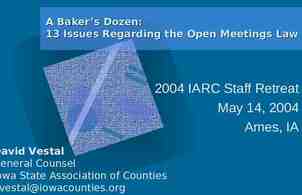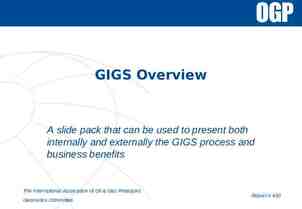FOR SERVICE OR PROFIT: A CASE STUDY OF A PUBLIC LIBRARY CAFÉ DR.
18 Slides855.58 KB
FOR SERVICE OR PROFIT: A CASE STUDY OF A PUBLIC LIBRARY CAFÉ DR. ANTHONY CHOW 1 BARRY BELL AND ERIN PRICE
OVERVIEW Study Introduction Review of the Literature Method Results Discussion and Recommendations 2 Q&A
INTRODUCTION Are the goals of the café well aligned with the goals of the organization and user? Who currently uses the café and for what purposes? 3 How can the café become more profitable?
REVIEW OF LITERATURE Options “A public library must be very clear as to why it wants to offer a service and whether it expects a profit.” (Reese, 1999) Traditional café, coffee cart, coffee stand, restaurant or vending machines? (Gerding, 2006) 4 Unless a staff member has a background in food service, outsourcing the café usually appears the best option. (Reese, 1999)
REVIEW OF LITERATURE For Service or Profit? Many libraries “mentioned they were more interested in selling ambience, a sense of place and community, than making money.” (Gerding, 2006) Seattle Public Library hosts a coffee cart staffed by a jobtraining organization providing jobs for homeless and disenfranchised people. (Wise, 2005) 5 Philadelphia Free Library collaborates with Project H.O.M.E., who provide on-the-job-training for formerly homeless people. (Price, 2009)
REVIEW OF LITERATURE Marketing Large, consumer bookstores can be considered libraries biggest competitors. (Dempsey, 2010) Libraries must brand and market themselves within their communities in order to compete with chains. (Harris, 2007) 6 Re-envisioning the design/image of a library café (Pierce, 1997) and creating a logo for the sale of branded items can generate a lot of interest. (Dempsey, 2010)
METHOD Administrator interviews focused upon current budget issues, changes in café/shop vision, current/past business models Observations focused upon café and bookshop patrons’ behaviors, overall atmosphere, customer service and transactions Observational interviews focused upon user perceptions of café services, purposes of use, frequency and duration of use, and overall satisfaction. Online survey 7 patrons rated the efficiency, effectiveness, and satisfaction of café goods and services.
RESULTS: ADMINISTRATOR INTERVIEWS Are the goals of the café well aligned with the goals of the organization and user? Literature reviewed suggests that many libraries show a greater degree of profit when cafes are run by an outside source or the Friends of the Library 8 Administrator interviews suggested a disconnect between the vision of the library and the profit motives of the Friends of the Library
OBSERVATIONS Who currently uses the café and for what purposes? Cafe Survey 1.6% 3.3% 8.2% 17 or under 18-24 45-64 65 or older 25-44 34.4% 52.5% 9 61 respondents over a three week period
OBSERVATIONS The level of customer service satisfaction depends on which employee is working. Cafe Survey--Quality of Service The staff offers suggestions about menu selections or book titles. The cashier was patient when taking order/receiving payment. The cafe has been clean on each of my visits. The cashier was able to answer my questions to my satisfaction. The staff was friendly and courteous. I am greeted promptly upon entering the cafe. 0.00 1.00 2.00 3.00 4.00 5.00 6.00 7.00 10 37 respondents
OBSERVATIONS 80-85% of customers using café come from or go to the library (i.e., using other services) I believe the Cafe in the library offers a needed service to patrons. 11 61 respondents
OBSERVATIONS AVERAGE CUSTOMER STAYED FOR NO MORE THAN 10 MINUTES. Survey-Duration of Use 5.4% 10.8% 5 minutes of less 5-10 minutes 10-15 minutes 15-30 minutes 40.5% 16.2% 30 minutes or more 27.0% Of 61 respondents, over 67% stayed 10 minutes or less 12 Most left immediately after their purchase.
CLEAR VISION For service or for profit? Café or bookstore? Salaries vs. Profit Finances show profitability before salaries and payroll taxes Profit Margins donated books have no overhead cost Volume of Sales food generates 2 to 3 times the amount of revenue that books generate on average Re-examine Products and Space 13 consistency in data show users want better quality food items and less “sterile” environment
SERVICE MODEL Must be willing to forego profit Redesign staffing model to affect a reduction of salaries/taxes more volunteers high-school service projects job training partnership Funding model supplements 14 grants corporate sponsorship/donation
PROFIT MODEL – BARNES & NOBLES BOOKSTORE MODEL More books in bookshop Sell food at higher profit margin more baked goods (cake, pie, muffins) more variety of products Targeted toward people with money Softer, more comfortable design ambience of relaxation 15 Re-envision placement of items
RECOMMENDATIONS. EACH PLAN SHOULD INCLUDE: Clear goal alignment between all stakeholders level of service level of profit Marketing Campaign Customer Service Training Cost analysis of 16 best selling items margin of profit on these items
WINDS OF CHANGE Focus shift at the café/bookstore Shift from quick service to promoting “hanging out” Music Okay to sit there as long as they like Promoting books and staying rather than emphasizing food and beverage and leaving quickly. Potential for both service (low expense foods) and profit (books 100% profit) 17 Integrating existing services into the café/bookstore
REFERENCES Dempsey, B. (2010). For love or money. Library Journal, 20-23. Gerding, S. (2006). Fund-raising perks of library cafes. Public Libraries, 40-45. Harris, C. (2007). Libraries with lattes: The new third place. APLIS, 145-152. Pierce, W. (1997). Espresso and ambiance: Library cafes. APLIS, 100103. Price, W. (2009). The story of the H.O.M.E. page cafe. Public Libraries, 32-34. Reese, N. (1999). Cafe service in public libraries. Public Libraries, 176178. 18 Wise, M. (2005). Books, hot coffee and a comfortable chair. Alki, 11-12.























